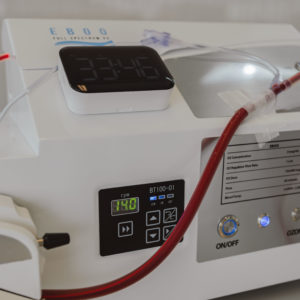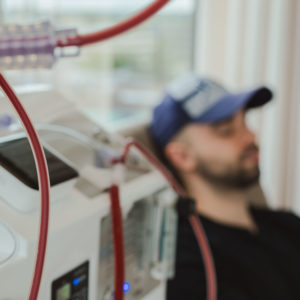
3 min|Dr. Alex Chan
Why Cold Therapy Is Good For You
Mind Health, Immune Health, BiohackingIn most of North American society, we have the luxury of staying warm and using central heating. While I don’t have to talk about the benefits of heat, I do want to highlight why we still should make an effort to get cold.
So, what is cold therapy?
Really, it’s just a fancy way of describing therapeutic cold exposure. This comes in many forms:
- Drinking chilled water
- Taking cold showers
- Polar bear plunges
Thermogenesis is a way we produce heat in our bodies to keep us warm. Cold therapy kicks this process into high gear. When you’re exposed to cold environments your body works to maintain a consistent body temperature or thermal homeostasis. As the temperature drops further, your body produces more energy to stay warm and burns calories to produce this heat which speeds up metabolism.

Temperature-regulating hormones
Epinephrine, norepinephrine and thyroid hormone are all involved in temperature regulation and so cold exposure helps to prime hormone use. Exposure to cold also favours production of brown fat over white fat. White fat is most often found insulating the abdominal organs, but too much of this can be unhealthy. Many North Americans have too much of this central visceral fat so stimulating a transition to more brown fat is healthier and can help reduce obesity and metabolic diseases.
Cold therapy and brain function
In addition to the fat-burning and metabolic benefits of cold therapy, did you know that brain function can be improved? Cold exposure stimulates cold shock proteins which decrease brain synaptic degeneration related to dementia and cognitive decline. Expert Dr. Rhonda Patrick (a cell biologist) says, “cold exposure and cold shock proteins may pose as significant puzzle pieces in combatting cellular degeneration and aging.”
She also describes how the cold increases WBC (white blood cell) counts and may support immune function by decreasing inflammation. Part of this anti-inflammatory effect is due to the circulatory effects of cold immersion. As arteries and blood vessels get cold, they narrow which reduces blood flow to damaged muscles. This “damage” may be exercise-induced, but by controlling the after affects, you can manage bruising and swelling. These physical benefits are also mirrored in improvements to mental health. After cold exposure, there is a change in endorphin and neurotransmitter levels that can create a sustained elevation in mood, energy and focus.
Takeaway
There are many different ways to get cold as well as debate on how long and how often you should stay cold for. It’s always best to discuss how to do this with a health professional as there can be concerns with hypothermia, burns from excess cold exposure and having a poor cold-adaptive response so you feel all the pain without any gains. I talk with patients in the Integrative Biohacking Program about the ways they can optimize their cold exposure.
In an upcoming blog, I’ll discuss some beginner cold therapy techniques, but for now consider whether you’d be willing to shiver.
Related Articles

3 min|Dr. Alex Chan
EBOO for Chronic Inflammation: A Natural Approach for Systemic Relief
Regenerative Medicine, EBOO Therapy
3 min|Dr. Alex Chan
EBOO Therapy for Autoimmune Conditions: Exploring the Potential Benefits
Autoimmune Disease, Regenerative Medicine, EBOO Therapy



